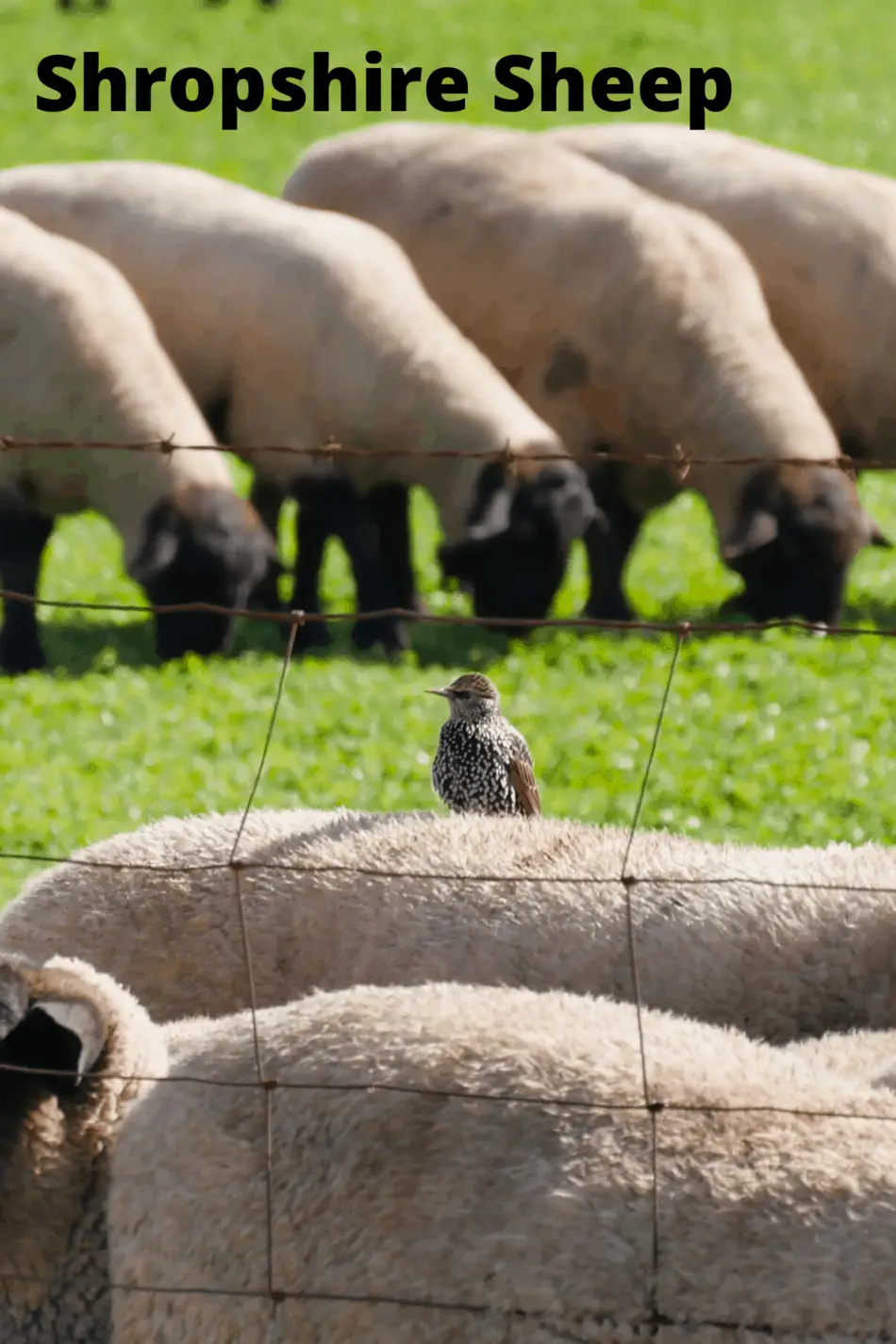Generally, Shropshire sheep – Shropshires are medium-sized sheep that stress soundness, carcass quality, and breed type. Shropshire lambs are hardy, vigorous, and meaty. Shropshire dating back to the 1300-the 1400s the area was famous for its wool production.
Shropshire Sheep Farming – How to Start a Shropshire Sheep Farm
Shropshire Sheep Farming – Giving you a snapshot of some of the Basics needed to understand the History, Housing, Feeding, Breeding, and Health Care of Raising Shropshire Sheep.
History of Shropshire Sheep
Like its name suggests the origin of Shropshire Sheep takes us back to the hills of Shropshire in England in 1840.
The wool industry has a long history in Shropshire dating back to the 1300-1400s the area was famous for it wool production. The Forest had been cleared and agriculture had replaced it. Shropshire wool was the most valuable wool to be had. Wool was exported all over the world.
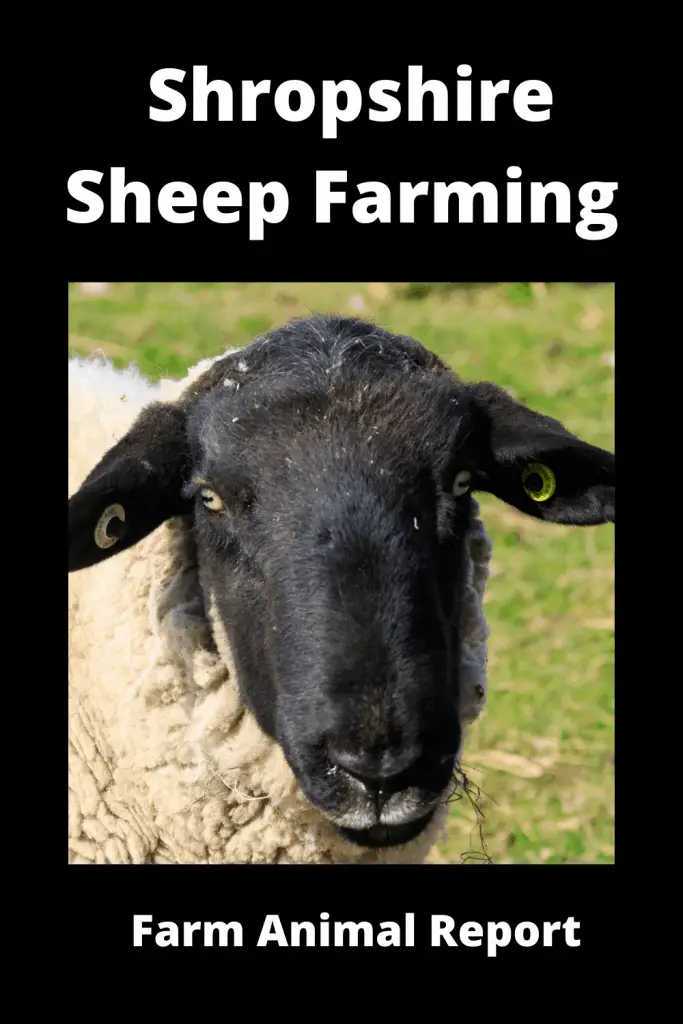
In the 1840s farmers bred the local Black-faced sheep and crossed them with
- Southdown Sheep
- Cotswold Sheep
- Leicester Sheep
They produced a Dual Purposed Sheep Breed. Good both for Wool and Meat. The breed gained official recognition in 1859. Its popularity blossomed throughout England. Shropshire sheep were brought to the United States in Maryland in 1869.
They were not only exported to the United States, but also Australia, New Zealand, and South America.
In the 1990’s Shropshire sheep were discovered not to nibble and eat evergreens. They also would not nibble the Bark off of Fruit Trees. They became very popular with Christmas Tree farmers, that used them to keep down grasses and weeds inside their tree farms. Allowed them to be more organic in their farming methods limiting the need for weed killers. Also, Sheep poop also fertilized the areas they Grazed.
They are well known to be a Tree Friendly Breed of Sheep. Other farmers have used the for Weed Control in other Farming Types. Then you also have the benefit of Wool, Milk, Meat, and fertilizer. It also allows organic farmers to help restrict the use of chemical weed Killers. These others are using them in these other types of farming.
- Christmas Tree Farms
- Orchards
- Vineyards
- Tree Farms – Nuserys – Deciduous Trees
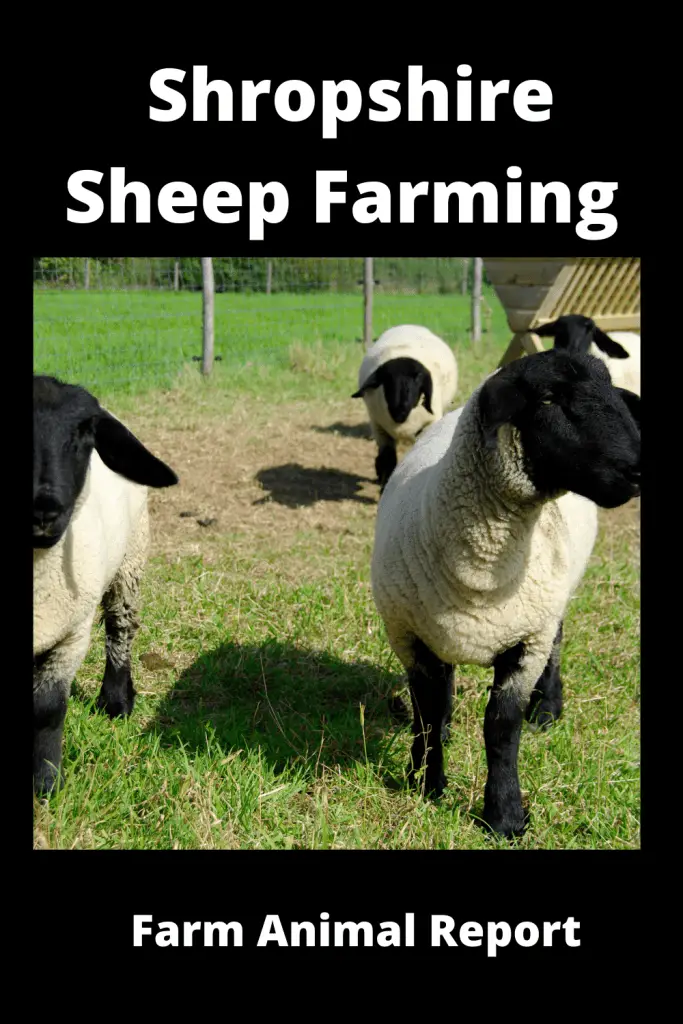
Characteristics of Shropshire Sheep
This is a large list of the Characteristics of the Shropshire Sheep Breed
- Wool is Fine and Dense – Heavy Wool Producer
- Medium Wool Producing Sheep – Giving 9 – 11 lbs of wool
- Ewes 170 lbs – 200 lbs
- Rams 220 lbs – 290 lbs
- Fiber size is 25 – 33 Microns
- White in Color
- Black Faces
- Duo purpose, but primarily for meat
- White Specks on face and legs
- No Horns
- Lifespan 10 -12 Years
- Even Toes – Hoofs
- Normal Body Temperature – 102 – 103 F
- Heartbeat rate 60 – 90 Minute
- Breaths 12 – 20 Breaths Minute
- Ruminants – With Multiple Stomachs
- Regurgitate the rechew called “Cud”
Housing and Fencing Needed
There are basically two types of fencing needed for your sheep farm. They are
- Perimeter – Fences are the ones that outline the property, or possibly your Grazing Pastures. The perimeter fence will keep your Sheep on your farm. It also serves to help keep Predators away from your Sheep Flock. This fence needs to be a very quality type of fence because these fences will probably remain in place for years. The best types of fencing are electric, with several strands. Barbed wire can be used at the bottom and top of the Fence. The woven fence is also good for helping keep out predators.
- Interior – The Interior fence may be permanent or movable. Its design would be to separate your flocks. Separate your Rams from Ewes, and also to separate lambs,
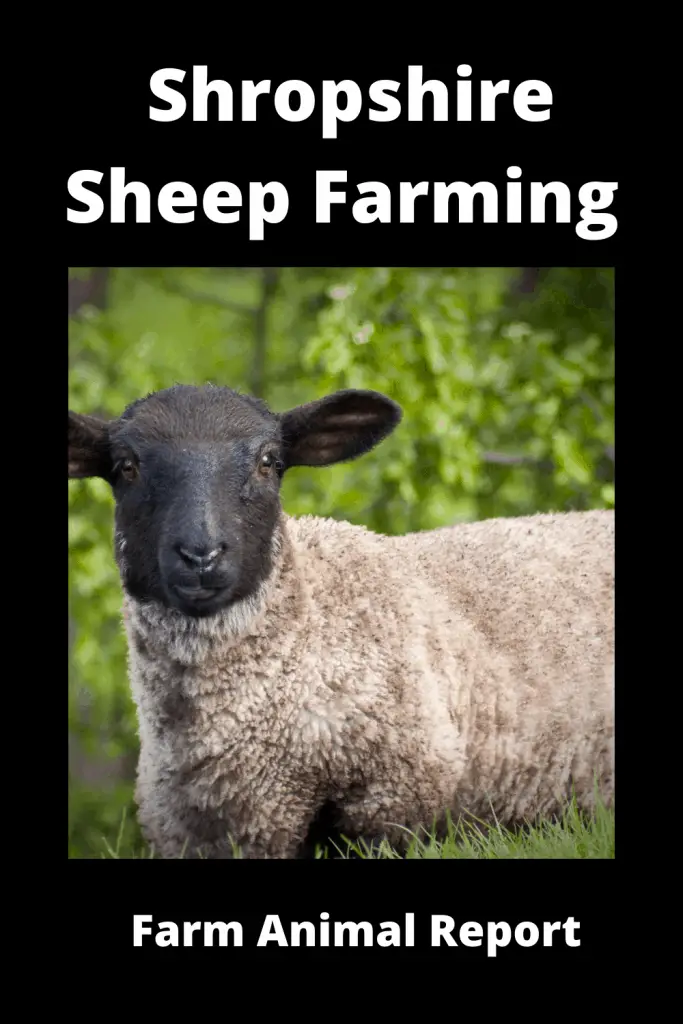
What is the Best Fence for sheep?
Here is a list of Available fences that can be used to contain your Flock
- Electric Fences – Consisting of High Tensile wire – insulators – charger ele/solar – should be 4,000 volt –
- Woven Wire – This is the most used traditional fencing used for sheep. 1 1/2″ spacing at the bottom of the fence, then up to 6″ spacing on the top. They are more costly than other systems. It is also effective against predators.
- Mesh Wire – 2′ x 4′ openings. Little less expensive than Woven wire
- Barbed Wire is used but not generally on sheep – it has no effect on predators and the sheep tend to get their wool caught in barbs.
- Wood and Rail fences are generally used inside the barnyard.
- Electric Netting can be great, but animals can become entangled
Livestock Fencing Height Tables
| Type of Livestock | Height of Fence | Spacing of Post Wood - $9.88 Steel - $3.58 | Best types Fencing | Price Per Roll |
|---|---|---|---|---|
| Horse | 54" x 60" | 8' | Electric Wire Wood | $ 189.00 |
| Cattle | 48" | 8' | Barbed Woven Electric | $ 259.00 |
| Sheep | 48" | 8' | Electric Woven Barbed | $ 259.00 |
| Buffalo | 5' 3" - 5' 6" | 8' | Barbed Electric | $ 249.00 |
| Deer | 6' - 10' | 8' | Woven Wire | $ 339.00 |
| Alpaca | 48" | 8' | Woven Electric | $ 259.00 |
| Pig | 2' - 3' Buried in Ground Pigs root | 6' - 8' apart | Woven Wire Barbed line on top and bottom | $ 259.00 |
| Chicken | 6' | 8' | Galvanized Hardware Cloth Chicken Wire | $ 57.99 |
| Rabbit | 3' | 8' | Chicken Wire Bury 1 foot | $ 29.00 |
Cost of Fence per Foot 2020 Tractor Supply Pricing
How do you install sheep fencing?
Fencing to contain your Flock needs to be done with longevity in mind – Fencepost needs to be strong. Wood and Steel can be used. Most Farmers usually space them at 8 Feet intervals. The fence needs to be tight and taught. Bottom and Top wires will decrease animal leaning and pushing on the fence.
How high should a sheep fence be?
Sheep Fence is a good height to keep Sheep Contained if it is 48″ High. A strong Support post is needed for strength. Sheep are grazers and if they can get their head through the bottom of fence will eat the greens for about 12″ on the outside if they are able to reach it. Sheep are a lot easier on fencing rather than cattle and horses. Sheep are short and are not able to lean over the top of the fence and bend it down. However, when they reach through to munch on the fenceline grass, they can pull their ear tags off.
Will Sheep Jump a Fence?
Yes, they can, Especially the Rams. When new sheep are introduced to your herd they are also known to wander. They are very inquisitive creatures and if there is a break, weak spot, they will locate and exploit it. However, jumping fences is not an often activity that you usually have to worry about. They prefer to stay with the flock, on familiar territory.
How High do Sheep Jump?
In checking with sheep farmers, I found several that indicated their she could clear 4′ Fence, on rare occasions found two farmers that had Blackface sheep that could do 5 ‘. Normally the sheep are more docile than that but there always is that spunky one. And normally 4’ fences are fine.
Shropshire Sheep Diet
Please Check out our Guide – Commercial Sheep Farming – for much more specifics
What is bad for sheep to eat?
Here is a list of plants that are poisonous for sheep. It is wise to walk your pastures to make sure that they are not growing.
- Noguera burr
- Lantana
- Castor oil plants
- Fireweed
- Rhododendron,
- Foxglove
- Privet hedge
- Oleander
- Here is an Exhaustive List of Plants that can be Harmful to your Sheep
Also, It is not good to feed you sheep cattle, horse feeds, only use sheep feeds. The other has higher concentrations of Copper which can be toxic to sheep
Can sheep live on grass alone?
Yes, They can sheep are ruminants and do fine eating and grazing on Pasture. Its when Pasture is not available that supplemental feeds, hays, grains need to be added to their diets
Pasture rotation is suggested moving sheep from one area to another as the grass is needed Recommendation vary from 2 -4 Sheep per Acre, depending on the amount and quality of the pasture.
Do Sheep Destroy Pastures?
Yes, They can and will. It is best to rotate pastures. Do not allow them to overgraze or they will eat it down to roots. They eat with their teeth. So they can pull grass out by roots. Young sheep have sharp teeth so cut the grass down. As sheep get older their teeth are worn and they then have the tendency to pull the grass up by roots when eating.
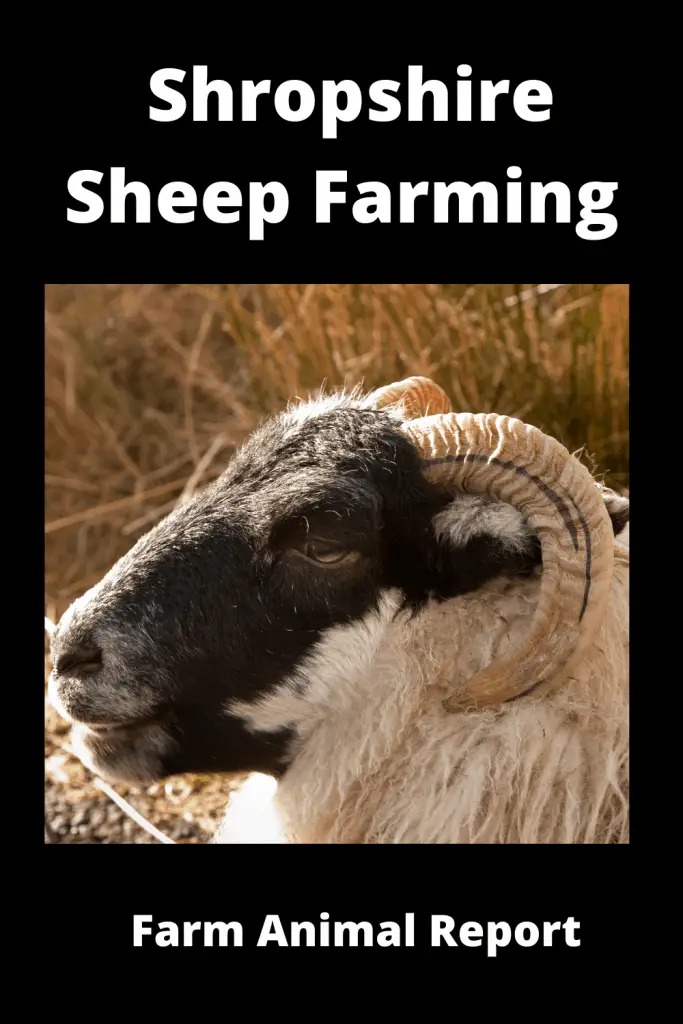
Important Points Breeding of Shropshire Sheep
Breeding of your sheep is very important to increase the size of your Flock.
- Need to Develop a Breeding Plan / Pedigrees / Ram to use
- Do not Breed two large of a ram to a smaller ewe, might produce a difficult Birth
- Gestation Birth is 150 days from Breeding – Mark your calendar
- Breed your Ewes in Early Fall months – Lambs are then born in not so harsh weather
- If you are purchasing Good Ram $ 300 – $ 600
- Good ewes will be around $ 200 – $300 at auction
- Feed them Both a Healthy diet prior to breeding. Good hay choices include Timothy, Bermudagrass, Bromegrass, Kentucky Bluegrass, Orchardgrass, and Ryegrass
- Clip all the wool and hair off the Butt and Vulva of the Ewe. This will remove any matted feces that might be lodged there
- Ewes will have a heat cycle every 16 – 17 days in the fall.
- They stay in the heat for 30 – 36 hours
- They will be Red and swollen and watery mucous will be seen from the vulva
- Ram will Stand by Ram when ready to be mounted
- 1 Ram to 1 or two ewes – never two rams in the same group of ewes – rams will fight
- Let them mate 2-3 times
- Ewes Appetite will increase and she will begin to look bigger in approx 3-4 Months – Pregnancy is around 5 Months
Diseases of Shropshire Sheep
Worming
The process for worming your sheep – This Video will show you a simple test to see whether they need to be wormed. It also shows you how to administer the wormer.
Pasteurella – Can Cause Types of pneumonia
Clostridial diseases –
Coccidiosis – can cause Diarrhea in lambs – Death at 21 Days
Foot-rot
How to prevent Foot Rot – University of Michigan. One of the Key prevention is the proper trimming of the Sheep Hooves. Foot Rot is contagious. You want to trim 2-3 times a year to keep it clean. You will need trimming shears, and also knives for proper trimming.
Marketing of Shropshire Sheep
Shropshire Sheep are known as dual-purpose sheep. They were Bred for meat and also Wool. So as you evaluate This Breed, I will include Sheep Wool Profitability Table. But in Marketing, you can Make profit from Sheep three ways
- Wool Production
- Meat Production – Usually Feeder Lambs are 60 lbs – 90 lbs. – Approx $ 150 – $200 – a Ewe will produce approx 3 Lambs a year
- Milk Production – Shropshire Sheep Breed
Sheep Farming for Wool Profitability Table
| Sheep | Lambs / 3 Per Yr | Space Required 20 Sq Feet - Each | Grazing Acres .3 / Sheep | Feed Required / Yr $100 | 15 Lbs Wool / Year | Average Price $ 10 / LB Wool | Total Revenue Possible |
|---|---|---|---|---|---|---|---|
| 1 | 3 | 60 sq ft | .9 acres | $ 300 | 45 lbs | $ 450 | $ 150 |
| 2 | 6 | 120 sq ft | 1.80 acres | $ 600 | 90 lbs | $ 900 | $ 300 |
| 5 | 15 | 300 sq ft | 4.5 acres | $ 1,500 | 225 lbs | $ 2,250 | $ 750 |
| 10 | 30 | 600 sq ft | 9 acres | $ 3,000 | 450 lbs | $ 4,500 | $ 1,500 |
| 20 | 60 | 1200 sq ft | 18 acres | $ 6,000 | 900 lbs | $ 9,000 | $ 3,000 |
| 30 | 90 | 2,700 sq ft | 27 acres | $ 9,000 | 1,350 lbs | $ 13,500 | $ 4,500 |
| 40 | 120 | 4800 sq ft | 36 acres | $ 12,000 | 1,800 lbs | $ 18,000 | $ 6,000 |
| 50 | 150 | 3,000 sq ft | 45 acres | $ 15,000 | 2,250 lbs | $ 22,500 | $ 7,500 |
| 100 | 300 | 6,000 sq ft | 90 acres | $ 30,000 | 4,500 lbs | $ 45,000 | $ 15,000 |
| 200 | 600 | 12,000 sq ft | 180 acres | $ 60,000 | 9,000 lbs | $ 90,000 | $ 30,000 |
Sheep can Produce 2 - 30 lbs of wool per year depending on Breed
Raw washed Wool Runs $ 6 - $ 14 using average $ 10
Feed 5 Months Buying Hay $ 100 rest Grazing
Please Check my Numbers
Sheep Farming for Milk Profitability Table
| Sheep | Lambs / 3 Per Yr | Space Required 20 Sq Feet - Each | Grazing Acres .3 / Sheep | Feed Required / Yr $100 | Wool $ 15 lb / Year | Average Price $ 10 / LB Wool | 90 Gallon/ Yr each ewe | Price $ 30 per Gallon | Total Wool Revenue Possible | Total Revenue Milk and Wool |
|---|---|---|---|---|---|---|---|---|---|---|
| 1 | 3 | 60 sq ft | .9 acres | $ 300 | 45 lbs | $ 450 | 270 | 8100 | $ 150 | 8,250 |
| 2 | 6 | 120 sq ft | 1.80 acres | $ 600 | 90 lbs | $ 900 | 540 | 16,200 | $ 300 | 16,500 |
| 5 | 15 | 300 sq ft | 4.5 acres | $ 1,500 | 225 lbs | $ 2,250 | 1350 | 40,500 | $ 750 | 41,250 |
| 10 | 30 | 600 sq ft | 9 acres | $ 3,000 | 450 lbs | $ 4,500 | 2700 | 81,000 | $ 1,500 | 82,500 |
| 20 | 60 | 1200 sq ft | 18 acres | $ 6,000 | 900 lbs | $ 9,000 | 5400 | 162,000 | $ 3,000 | 165,000 |
| 30 | 90 | 2,700 sq ft | 27 acres | $ 9,000 | 1,350 lbs | $ 13,500 | 8100 | 243,000 | $ 4,500 | 247,500 |
| 40 | 120 | 4800 sq ft | 36 acres | $ 12,000 | 1,800 lbs | $ 18,000 | 10,800 | 324,000 | $ 6,000 | 330,000 |
| 50 | 150 | 3,000 sq ft | 45 acres | $ 15,000 | 2,250 lbs | $ 22,500 | 13,500 | 405,000 | $ 7,500 | 412,500 |
| 100 | 300 | 6,000 sq ft | 90 acres | $ 30,000 | 4,500 lbs | $ 45,000 | 27,000 | 810,000 | $ 15,000 | 825,000 |
| 200 | 600 | 12,000 sq ft | 180 acres | $ 60,000 | 9,000 lbs | $ 90,000 | 54,000 | 1,620,000 | $ 30,000 | 1,650,000 |
Sheep can Produce 1/2 Gallon Milk per day / 180 Day Lactation
Raw Sheep Milk $9 - $25 per Quart - Used $ 30 per Gallon for Table
Feed 5 Months Buying Hay $ 100 rest Grazing
Please Check my Numbers
Conclusion – Shropshire Sheep
Shropshire Sheep are a very old and Established Breed know for their Fine Wool, Good Natures and Meat Producing Characteristics. They are a good addition to your farm.


